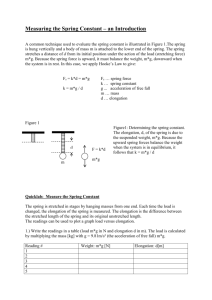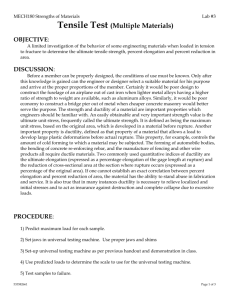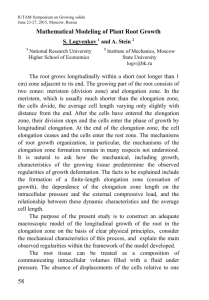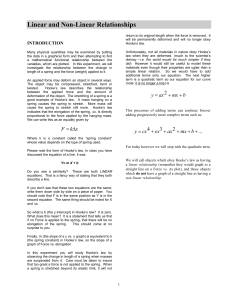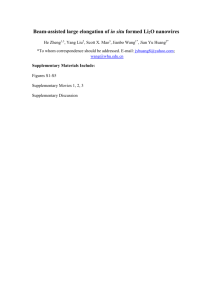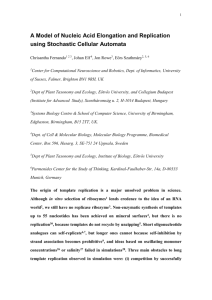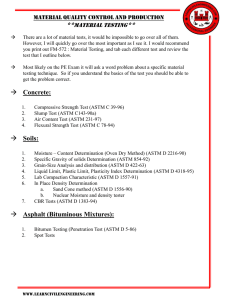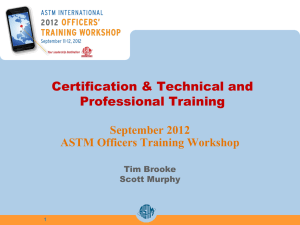Elongation % requirements for rebar
advertisement
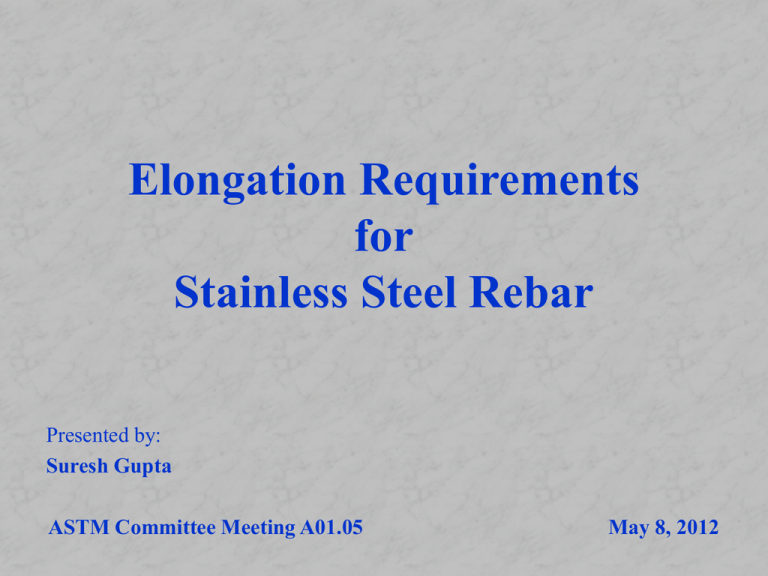
Elongation Requirements for Stainless Steel Rebar Presented by: Suresh Gupta ASTM Committee Meeting A01.05 May 8, 2012 Purpose of Elongation • Elongation is a measure of ductility, which provides confidence that metals can be formed, without cracking or fracturing. • In rebar, it defines ductility so that bars can be bent without cracking. – If bars do not crack during fabrication, any excess elongation is irrelevant. Alloy Characteristics With all other variables remaining same, • Austenitic Alloys have highest elongation. • Duplex Alloys have elongation in mid range • Ferritic Alloys have lowest elongation Measurement Methods and Facts • % Elongation, when measured in a fixed gage length, e.g. 8 inches, is lower than when measured in a gage length, as a multiple of diameter, e.g. 4 X diameter (4d). (when 4d is less than fixed gage length). • Elongation is generally lower as diameter goes smaller. • This fact is clearly described in ASTM E8, Appendix XI ASTM E8 Standard Test Method for Tension Testing of Metallic Materials Appendix XI – Factors Affecting Tensile Test Results • Comparison of elongation values determined using different specimens requires that the following ratio be controlled: Lo/(Ao)1/2 (XI.1) Where: Lo = original gage length of specimen, and Ao= original cross-sectional area of specimen. XI.4.4.1 Specimens with smaller Lo/(Ao)1/2 ratios generally give greater elongation. Note: (Ao)1/2 is proportional to diameter (d). Therefore, for same ductility, larger diameter samples result in greater elongation values, when measured in fixed gage length. ASTM A955-9a • Until revision 10a, elongation was not required for – sizes # 3-5 Grade 75, probably because it was known that it is unrealistic or not necessary. – Grade 40 for sizes 7 and larger because, in any condition it will meet the requirement, anyway. % Elongation Requirements for Rebar Carbon and Alloy steels • ASTM A615 requires 6 to 7% for Grade 75 • ASTM A706 requires 10 to 14% for all Grades. Stainless Steels • BS 6744 requires 14% minimum in 5d gage length for Grade 500 (72.5 ksi). • ASTM A955 requires 20% minimum in 8 inch gage length for all grades, all sizes. Manufacturing & Process Control • Even with precise chemistry and process control, duplex stainless steels meet the elongation requirement very marginally. – If rebar is supplied in coils, machine straightening will cause work hardening and elongation will go down even further. –This may cause unnecessary dispute. Rationale • If 6% elongation in carbon steel is sufficient • If 14% in 5d is sufficient for stainless steel rebar per BS6744 in Europe, –It should be sufficient for us as well. FYI • ASTM Specifications for plain smooth bars require elongation in 4d Proposal • It is therefore recommended that, – Using a foot note to Table 3, elongation requirements be lowered to 14% for Grade 75, • for all sizes of duplex grades and, • all grades of stainless steels under 1.00 inch.
